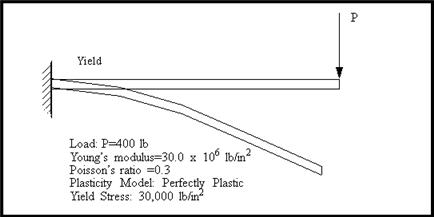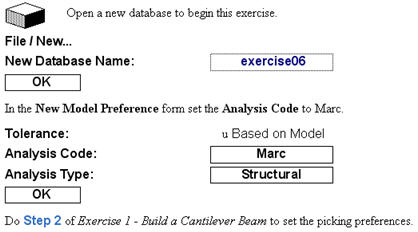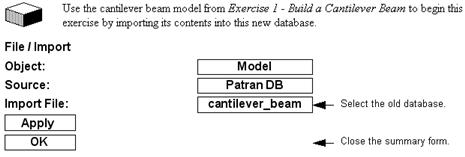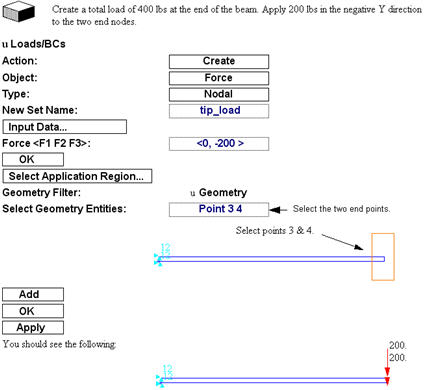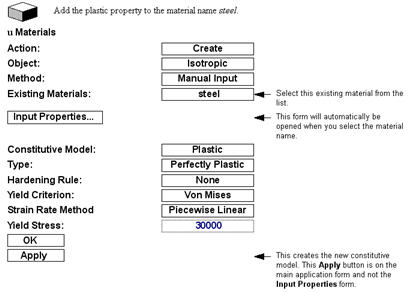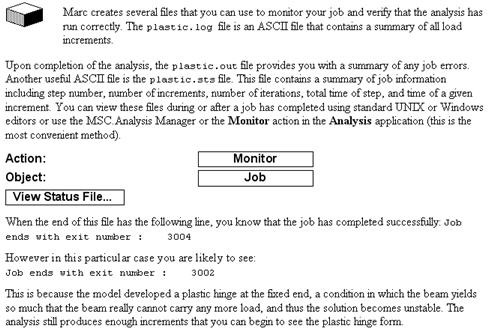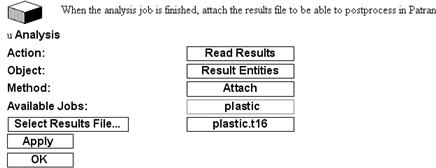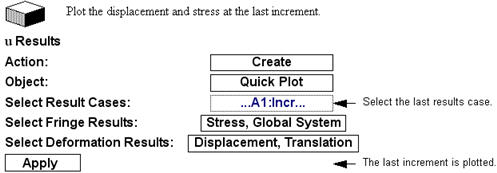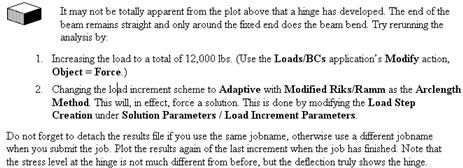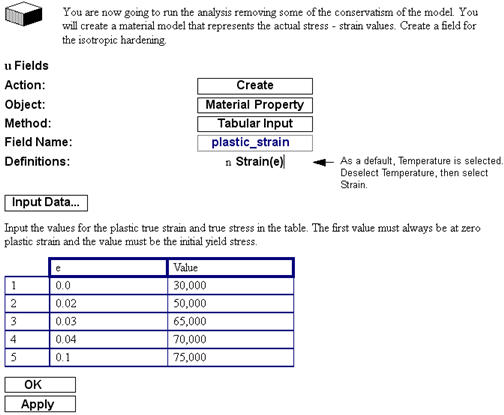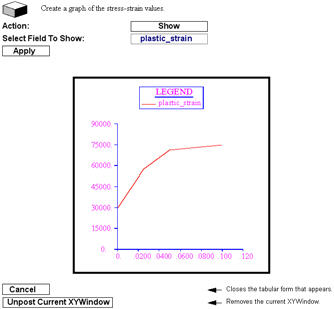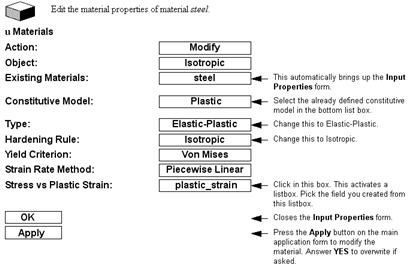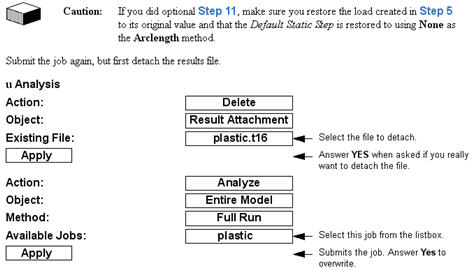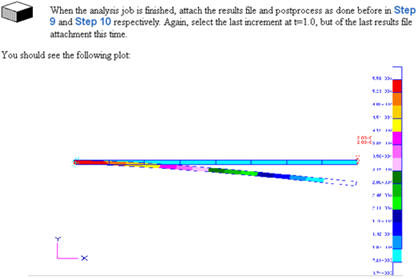XXXXXXXXXXXXXXXXXXXXXXXXXXXXXXXXXXXXXXXXXXXXXXXXXXXXXXXXXXXXXXXXXXXXXXXXXXXXXXXXXXXXXXXXXXXXXXXXXXXXXXXXXXXXXXXXXXXXXXXXXXXXXXXXXXXXXXXXXXXXXXXXXXXXXXXX''"> Exercise 6 - Nonlinear Material Plasticity
In this exercise, you will be loading the cantilever beam so that it bends beyond its yield point. You will need to include plasticity as part of the material definition to accurately model this material behavior. First you will analyze the cantilever beam using the simplest material plasticity model, perfectly plastic. This material model assumes no hardening occurs after yield and it is useful for first order analysis. This plasticity model is also one of the most conservative models. After reviewing the results, this model will prove to be too conservative because a “Plastic Hinge” develops prior to reaching full load. You will then change the material plasticity model to an isotropic hardening model and rerun the analysis. This material model defines the true plastic strain versus true stress and tends to represent the material hardening more accurately.
Step 1: Do Exercise 1 - Build a Cantilever Beam
Step 2: Open a New Database
Step 3: Import the Old Database
Step 4: Post Only the Beam
Step 5: Create a Point Load
Step 6: Create a Plastic Material Constitutive Model
Step 7: Run the Analysis
Step 8: Monitor the Analysis
Step 9: Read the Results
Step 10: Postprocessing the Results
Note the level of stress at the fixed end relative to the 30,000 psi yield stress.
Step 11: Optional Challenge
Step 12: Model Isotropic Hardening
Step 13: Create a Graph
Step 14: Edit the Material Properties
Step 15: Rerun the Analysis
Step 16: Read and Postprocess the Results
Step 17: Closing/Quitting Patran
Note: | In this exercise we defined a new material constitutive model within an existing material named steel. Material properties are part of the model definition. If associated to any element, all constitutive models will be translated and placed in the Marc input file. This means that if you were to try and rerun any of the previous exercises with this database, you would get the work hardening definition written to the input deck. This will cause result to differ from the original exercise. Constitutive models can be activated and deactivated. You should deactivate the plastic constitutive model if you wish to analyze a model without the plasticity or other constitutive models likewise. This is done under the Materials application using the Change Material Status... form. |
